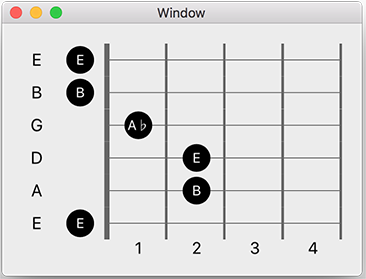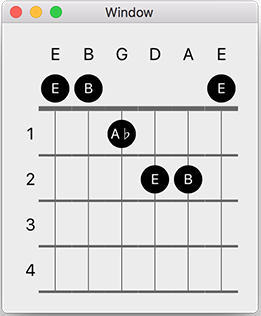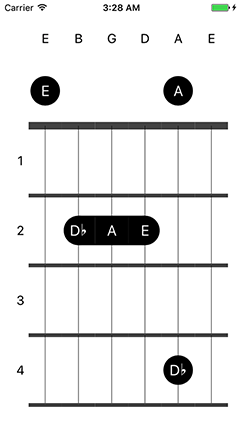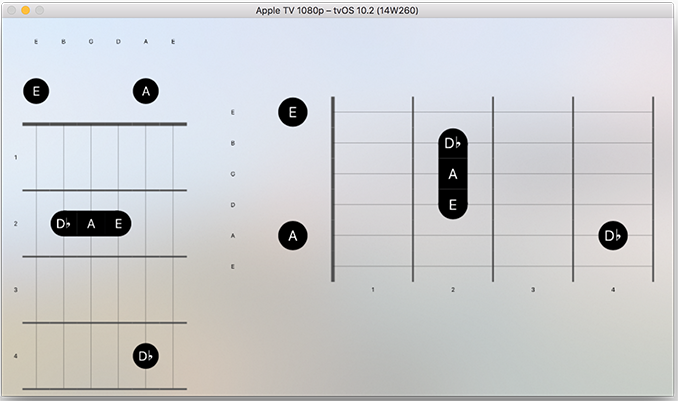-
Notifications
You must be signed in to change notification settings - Fork 11
/
Copy pathFretboard.podspec
265 lines (192 loc) · 9.91 KB
/
Fretboard.podspec
1
2
3
4
5
6
7
8
9
10
11
12
13
14
15
16
17
18
19
20
21
22
23
24
25
26
27
28
29
30
31
32
33
34
35
36
37
38
39
40
41
42
43
44
45
46
47
48
49
50
51
52
53
54
55
56
57
58
59
60
61
62
63
64
65
66
67
68
69
70
71
72
73
74
75
76
77
78
79
80
81
82
83
84
85
86
87
88
89
90
91
92
93
94
95
96
97
98
99
100
101
102
103
104
105
106
107
108
109
110
111
112
113
114
115
116
117
118
119
120
121
122
123
124
125
126
127
128
129
130
131
132
133
134
135
136
137
138
139
140
141
142
143
144
145
146
147
148
149
150
151
152
153
154
155
156
157
158
159
160
161
162
163
164
165
166
167
168
169
170
171
172
173
174
175
176
177
178
179
180
181
182
183
184
185
186
187
188
189
190
191
192
193
194
195
196
197
198
199
200
201
202
203
204
205
206
207
208
209
210
211
212
213
214
215
216
217
218
219
220
221
222
223
224
225
226
227
228
229
230
231
232
233
234
235
236
237
238
239
240
241
242
243
244
245
246
247
248
249
250
251
252
253
254
255
256
257
258
259
260
261
262
263
264
265
#
# Be sure to run `pod spec lint Fretboard.podspec' to ensure this is a
# valid spec and to remove all comments including this before submitting the spec.
#
# To learn more about Podspec attributes see http://docs.cocoapods.org/specification.html
# To see working Podspecs in the CocoaPods repo see https://github.com/CocoaPods/Specs/
#
Pod::Spec.new do |s|
# ――― Spec Metadata ―――――――――――――――――――――――――――――――――――――――――――――――――――――――――― #
#
# These will help people to find your library, and whilst it
# can feel like a chore to fill in it's definitely to your advantage. The
# summary should be tweet-length, and the description more in depth.
#
s.name = "Fretboard"
s.version = "0.0.2"
s.summary = "Customisable guitar fretboard view for iOS, tvOS and macOS with CoreGraphics"
s.swift_version = "4.2"
# This description is used to generate tags and improve search results.
# * Think: What does it do? Why did you write it? What is the focus?
# * Try to keep it short, snappy and to the point.
# * Write the description between the DESC delimiters below.
# * Finally, don't worry about the indent, CocoaPods strips it!
s.description = <<-DESC
Fretboard
===
Customisable guitar fretboard view for iOS, tvOS and macOS with CoreGraphics.
Demo
----
### Mac


### iOS

### Apple TV

### Storyboard

Requierments
----
* Swift 4.0+
* iOS 8.0+
* tvOS 9.0+
* macOS 10.9+
Install
----
```
use_frameworks!
pod 'Fretboard'
```
Usage
----
Create a `FretboardView`, subclass of `UIView` with code or from storyboard.
### Note selection
Fretboard uses [`MusicTheory`](https://github.com/cemolcay/MusicTheory) library to render scales, chords or notes.
You need to select/unselect notes, chords or scales on `fretboard` property of your `FretboardView` instance.
``` swift
let chord = Chord(type: ChordType(third: .major), key: Key(type: .a))
fretboardView?.fretboard.select(chord: chord)
let scale = Scale(type: .major, key: Key(type: .e, accidental: .flat))
fretboardView?.fretboard.select(scale: scale)
let note = Pitch(key: Key(type: .a), octave: 2)
fretboardView?.fretboard.select(note: note)
fretboardView?.fretboard.unselect(note: note)
fretboardView?.fretboard.unselectAll()
```
You could also set `isChordModeOn` property to true, if you want the render only lowest pitch on a string.
I recommend 3, 4 or 5 frets to use that feature.
### Tuning
Fretboard has a neat tuning property which is a `FretboardTuning` protocol, lets you define strings and their represented notes on fretboard.
It has a bunch of premade tunings in `GuitarTuning`, `BassTuning` and `UkeleleTuning` enums.
Also, you can define custom tunings with `CustomTuning` struct with custom string count as well.
``` swift
let tuning = CustomTuning(
strings: [
Pitch(key: Key(type: .g), octave: 2),
Pitch(key: Key(type: .d), octave: 2),
Pitch(key: Key(type: .a), octave: 1),
Pitch(key: Key(type: .e), octave: 1)
],
description: "My Custom Tuning")
fretboardView?.fretboard.tuning = tuning
```
### Direction
You could render fretboard either horizontal or vertical with `direction` property on fretboard of type `FretboardDirection`.
``` swift
freboardView?.fretboard.direction = .horizontal
freboardView?.fretboard.direction = .vertical
```
### Frets
You could render any range of fretboard with `startIndex` and `count` properties on fretboard.
`startIndex` is the starting fret and 0 is open string, defaults 0.
`count` is the fret count and defaults 5.
### Customisation
You could change the line widths and colors of frets and strings.
You could change the colors of fret numbers, string names, notes from code or storyboard.
Rendering note names on pressed notes and optional.
Also rendering fret numbers and strings names are optional too.
See the properties of `FretboardView`.
### FretboardScrollView
There is also a scroll view you can use in your iOS/tvOS/macOS apps that you can scroll your fretboard inside it. It has a `FretboardView` instance you can customise your fretboard directly.
``` swift
@IBOutlet weak var scrollView: FretboardScrollView?
scrollView?.fretboardView.fretStartIndex = appState.fretStartIndex
scrollView?.fretboardView.fretCount = appState.fretCount
scrollView?.fretboardView.fretboard.tuning = appState.tuning.tuning
```
FretBud
----
This library is used in my iOS/tvOS app [FretBud](https://itunes.apple.com/us/app/fretbud-chord-scales-for-guitar-bass-and-more/id1234224249?mt=8), check it out!
[](https://itunes.apple.com/us/app/fretbud-chord-scales-for-guitar-bass-and-more/id1234224249?mt=8)
DESC
s.homepage = "https://github.com/cemolcay/Fretboard"
# s.screenshots = "www.example.com/screenshots_1.gif", "www.example.com/screenshots_2.gif"
# ――― Spec License ――――――――――――――――――――――――――――――――――――――――――――――――――――――――――― #
#
# Licensing your code is important. See http://choosealicense.com for more info.
# CocoaPods will detect a license file if there is a named LICENSE*
# Popular ones are 'MIT', 'BSD' and 'Apache License, Version 2.0'.
#
s.license = "MIT"
# s.license = { :type => "MIT", :file => "FILE_LICENSE" }
# ――― Author Metadata ――――――――――――――――――――――――――――――――――――――――――――――――――――――――― #
#
# Specify the authors of the library, with email addresses. Email addresses
# of the authors are extracted from the SCM log. E.g. $ git log. CocoaPods also
# accepts just a name if you'd rather not provide an email address.
#
# Specify a social_media_url where others can refer to, for example a twitter
# profile URL.
#
s.author = { "cemolcay" => "[email protected]" }
# Or just: s.author = "cemolcay"
# s.authors = { "cemolcay" => "[email protected]" }
s.social_media_url = "http://twitter.com/cemolcay"
# ――― Platform Specifics ――――――――――――――――――――――――――――――――――――――――――――――――――――――― #
#
# If this Pod runs only on iOS or OS X, then specify the platform and
# the deployment target. You can optionally include the target after the platform.
#
# s.platform = :ios
# s.platform = :ios, "5.0"
# When using multiple platforms
s.ios.deployment_target = "9.0"
s.osx.deployment_target = "10.9"
# s.watchos.deployment_target = "2.0"
s.tvos.deployment_target = "9.0"
# ――― Source Location ―――――――――――――――――――――――――――――――――――――――――――――――――――――――――― #
#
# Specify the location from where the source should be retrieved.
# Supports git, hg, bzr, svn and HTTP.
#
s.source = { :git => "https://github.com/cemolcay/Fretboard.git", :tag => "#{s.version}" }
# s.source = { :path => "." }
# ――― Source Code ―――――――――――――――――――――――――――――――――――――――――――――――――――――――――――――― #
#
# CocoaPods is smart about how it includes source code. For source files
# giving a folder will include any swift, h, m, mm, c & cpp files.
# For header files it will include any header in the folder.
# Not including the public_header_files will make all headers public.
#
s.source_files = "Source/*.swift"
# s.public_header_files = "Classes/**/*.h"
# ――― Resources ―――――――――――――――――――――――――――――――――――――――――――――――――――――――――――――――― #
#
# A list of resources included with the Pod. These are copied into the
# target bundle with a build phase script. Anything else will be cleaned.
# You can preserve files from being cleaned, please don't preserve
# non-essential files like tests, examples and documentation.
#
# s.resource = "icon.png"
# s.resources = "Resources/*.png"
# s.preserve_paths = "FilesToSave", "MoreFilesToSave"
# ――― Project Linking ―――――――――――――――――――――――――――――――――――――――――――――――――――――――――― #
#
# Link your library with frameworks, or libraries. Libraries do not include
# the lib prefix of their name.
#
# s.framework = "SomeFramework"
# s.frameworks = "SomeFramework", "AnotherFramework"
# s.library = "iconv"
# s.libraries = "iconv", "xml2"
# ――― Project Settings ――――――――――――――――――――――――――――――――――――――――――――――――――――――――― #
#
# If your library depends on compiler flags you can set them in the xcconfig hash
# where they will only apply to your library. If you depend on other Podspecs
# you can include multiple dependencies to ensure it works.
s.requires_arc = true
# s.xcconfig = { "HEADER_SEARCH_PATHS" => "$(SDKROOT)/usr/include/libxml2" }
s.dependency "MusicTheorySwift"
s.dependency "CenterTextLayer"
end